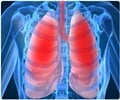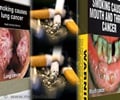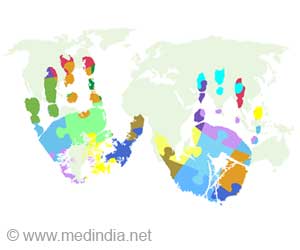On exposure to smoke, the Frizzled 4 receptors molecule that sits on the surface of lung cells, disappears and cell growth comes to a halt.
Highlights
- The lung’s homeostasis is maintained by WNT/beta-catenin signaling, which is regulated by WNT receptor called Frizzled 4 (FZD4).
- The Frizzled 4 (FZD4), sits on the surface of the lung cells and regulates the self-renewal of the cells in the lungs via WNT/beta-catenin pathway.
- On exposure to cigarette smoke, Frizzled 4 disappears from the surface and cell growth comes to a halt, thus reducing self-healing capacity of the lungs and leading to chronic obstructive pulmonary disorder.
In Germany, COPD affects around 10%-12% of the adults over 40 years of age. Experts estimate the national economic costs of the disease at almost six billion euros annually.
In COPD, the natural self-healing capacity of the lungs is lost.
Role of Frizzled 4 Receptor
"In healthy patients, the so-called WNT/beta-catenin signaling pathway is responsible for the lung’s homeostasis. Until now, it was not clear why it was silenced in patients with COPD," explains Dr. Dr. Melanie Königshoff, head of the Lung Repair and Regeneration (LRR) Research Unit of the Comprehensive Pneumology Center (CPC) at Helmholtz Zentrum München.
Researchers discovered that one of the WNT receptors especially Frizzled 4 (FZD4), plays an important role in regulating the signaling of WNT/β-catenin pathway.
This reduced FZD4 expression in COPD contributes to reduced self-healing capacity of the lungs.
Increasing Frizzled 4 Levels
Significantly fewer Frizzled 4 receptors were found in the lung tissue of COPD patients, and especially that of smokers, compared to the lungs of smokers.
"In the next step, we were able to prove in cell culture and model systems that inhibition of Frizzled 4 signaling on the cells led to decreased WNT/beta-catenin activity and consequently to reduced wound healing and repair capacity," described Dr. Ali Önder Yildirim, an expert on the effects of cigarette smoke in the lung.
In the absence of the receptor, there was a loss of certain proteins that are important for maintaining the structure of lung tissue and the lung’s elasticity, allowing patients to breathe.
The scientists artificially increased Frizzled 4 levels in a cell culture test to stimulate its production. The increase in Frizzled 4 reactivated the blocked repair process and led to the production of many of the previously reduced proteins.
"The activation of the Frizzled 4 receptor can restore the WNT/beta-catenin signaling pathway and consequently lead to repair in the lung," explains Melanie Königshoff.
This is an important discovery that might lead to development of new therapies for COPD patients.
The findings are reported in the American Journal of Respiratory and Critical Care Medicine.
Reference
- Wioletta Skronska-Wasek et al. Reduced Frizzled Receptor 4 Expression Prevents WNT/β-catenin-driven Alveolar Lung Repair in COPD. American Journal of Respiratory and Critical Care Medicine; (2017) doi.org/10.1164/rccm.201605-0904OC
Source-Medindia
















